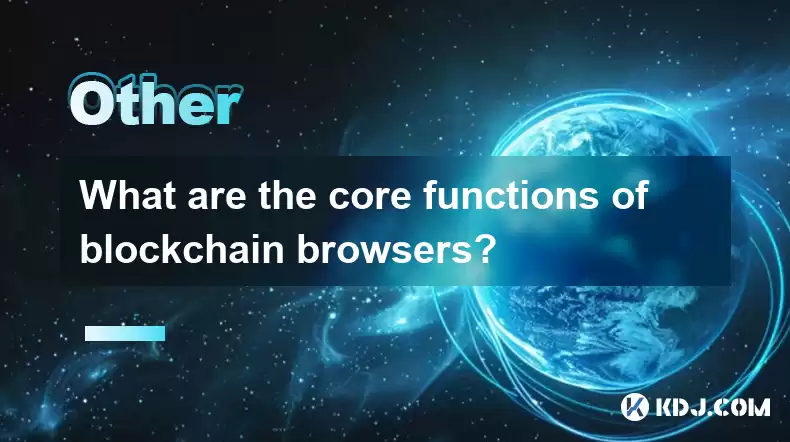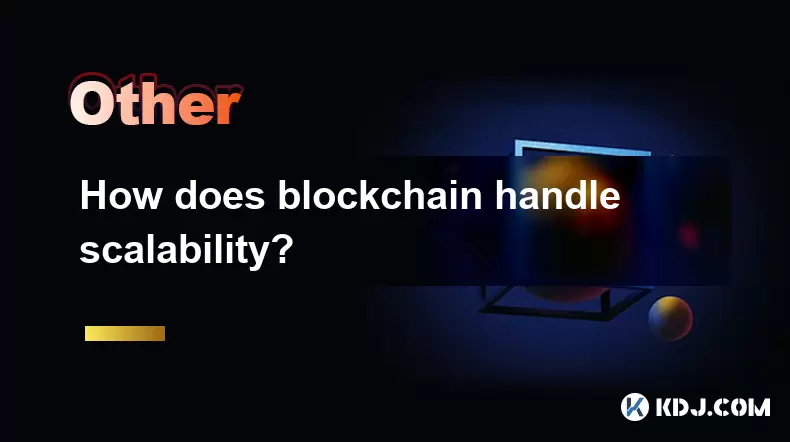-
 Bitcoin
Bitcoin $113900
-1.39% -
 Ethereum
Ethereum $3517
-4.15% -
 XRP
XRP $3.009
1.59% -
 Tether USDt
Tether USDt $0.9997
-0.04% -
 BNB
BNB $766.8
-1.41% -
 Solana
Solana $164.6
-2.38% -
 USDC
USDC $0.9998
-0.02% -
 TRON
TRON $0.3277
0.65% -
 Dogecoin
Dogecoin $0.2023
-1.67% -
 Cardano
Cardano $0.7246
0.05% -
 Hyperliquid
Hyperliquid $38.27
-4.77% -
 Sui
Sui $3.528
-0.52% -
 Stellar
Stellar $0.3890
-0.73% -
 Chainlink
Chainlink $16.16
-2.69% -
 Bitcoin Cash
Bitcoin Cash $539.9
-4.38% -
 Hedera
Hedera $0.2425
-2.00% -
 Avalanche
Avalanche $21.71
-0.97% -
 Toncoin
Toncoin $3.662
5.73% -
 Ethena USDe
Ethena USDe $1.000
-0.02% -
 UNUS SED LEO
UNUS SED LEO $8.964
0.35% -
 Litecoin
Litecoin $107.7
2.33% -
 Shiba Inu
Shiba Inu $0.00001223
-0.40% -
 Polkadot
Polkadot $3.617
-0.97% -
 Uniswap
Uniswap $9.052
-2.49% -
 Monero
Monero $295.1
-3.79% -
 Dai
Dai $0.9999
0.00% -
 Bitget Token
Bitget Token $4.315
-1.85% -
 Pepe
Pepe $0.00001060
0.11% -
 Cronos
Cronos $0.1342
-2.72% -
 Aave
Aave $256.0
-0.87%
What are the core functions of blockchain browsers?
Blockchain browsers offer tools like transaction and address exploration, smart contract interaction, and real-time network stats for a deeper understanding of blockchain networks.
Mar 29, 2025 at 01:50 pm

Exploring the Functionality of Blockchain Browsers
Blockchain browsers are specialized tools designed to interact with and explore various blockchain networks. Unlike traditional web browsers, they offer functionalities specifically tailored to the decentralized and transparent nature of blockchain technology. They provide users with a user-friendly interface to access and analyze data residing on the blockchain. This allows for a deeper understanding of transactions, smart contracts, and the overall state of the network.
One of the most fundamental functions is transaction exploration. Users can input a transaction hash to retrieve detailed information about that specific transaction, including the sender, receiver, amount, timestamp, and gas fees. This feature is crucial for verifying transactions and understanding the flow of funds within the blockchain. This transparency is a core tenet of blockchain technology.
Another key function is address exploration. By inputing a cryptocurrency address, users can view all incoming and outgoing transactions associated with that address. This provides insights into the activity and balance of a particular wallet. This is particularly useful for tracking assets and identifying potential suspicious activity. Privacy concerns are, however, always important to consider.
Furthermore, many blockchain browsers allow for smart contract exploration. Users can view the code of deployed smart contracts, understand their functionality, and even interact with them by submitting transactions. This is vital for developers and users alike who need to understand the logic and behavior of decentralized applications (dApps).
Blockchain browsers also frequently include block exploration. This feature enables users to view the contents of individual blocks, including the transactions included, the timestamp, and the block hash. This provides a granular view of the blockchain's history and allows for verification of block integrity. This functionality is critical for understanding the chronological order of transactions.
Many advanced blockchain browsers offer network statistics. This includes data such as the network's hashrate, the number of pending transactions, and the block time. This information provides a real-time overview of the network's health and performance. This helps users understand the overall state of the blockchain.
Some blockchain browsers also provide token tracking. This functionality allows users to track the balance and transactions of various tokens built on the blockchain, expanding beyond just the native cryptocurrency. This is especially helpful in the rapidly growing DeFi ecosystem.
A vital function, especially for developers, is API access. Many blockchain browsers offer APIs allowing developers to programmatically access and analyze blockchain data. This allows for the creation of decentralized applications (dApps) and other tools that leverage blockchain data. This facilitates a vibrant developer ecosystem.
Finally, some blockchain browsers incorporate visualization tools. These tools represent blockchain data graphically, making it easier to understand complex relationships and trends within the network. Visual representations can significantly improve data comprehension.
Deeper Dive into Specific Features
Transaction History Visualization: Many browsers don't just list transactions; they present them in a visually appealing and easy-to-understand manner. This often includes charts and graphs showing the flow of funds over time. This enhances the user experience and facilitates data analysis.
Filtering and Sorting: Advanced browsers allow users to filter and sort transactions based on various criteria, such as date, amount, sender, or receiver. This is essential for efficient data management and retrieval.
Real-time Updates: The best blockchain browsers provide real-time updates on the network's activity. This allows users to monitor transactions and network statistics as they happen. This is crucial for time-sensitive applications and monitoring network health.
Multiple Blockchain Support: Some browsers support multiple blockchains, allowing users to explore and interact with various networks from a single interface. This simplifies the process for users interacting with multiple cryptocurrencies and decentralized applications.
Customizable Dashboards: Many advanced browsers offer customizable dashboards, allowing users to select and display the information most relevant to their needs. This personalized experience improves efficiency and user satisfaction.
Security Features: Reliable blockchain browsers prioritize security, implementing measures to protect user data and prevent unauthorized access. This is paramount in the cryptocurrency space, where security is of utmost importance.
Integration with Wallets: Some browsers integrate directly with cryptocurrency wallets, enabling users to manage their assets and interact with dApps seamlessly. This streamlined approach enhances usability and convenience.
Developer Tools: For developers, blockchain browsers often include advanced debugging tools and APIs for building and testing dApps. This fosters a vibrant ecosystem of decentralized applications.
Community Support and Documentation: Reputable blockchain browsers provide comprehensive documentation and community support, helping users troubleshoot issues and learn how to use the platform effectively. This is crucial for user adoption and ongoing support.
Frequently Asked Questions
Q: What is the difference between a blockchain browser and a regular web browser?
A: A regular web browser accesses websites hosted on centralized servers. A blockchain browser accesses and interacts with decentralized blockchain networks, providing tools to explore transactions, addresses, blocks, and smart contracts.
Q: Are blockchain browsers safe to use?
A: The safety of a blockchain browser depends on its reputation and security measures. Always use reputable browsers from trusted sources and be cautious about providing sensitive information.
Q: Can I use a blockchain browser to mine cryptocurrency?
A: No, blockchain browsers are primarily for exploring and interacting with blockchain data; they don't typically include mining functionalities. Mining requires specialized software and hardware.
Q: Are all blockchain browsers the same?
A: No, different blockchain browsers offer varying functionalities and support different blockchains. Some are more user-friendly, while others offer more advanced features for developers.
Q: How do I choose the right blockchain browser?
A: Consider the blockchains you need to explore, the features you require (e.g., advanced analytics, API access), and the browser's reputation and security.
Q: Are blockchain browsers free to use?
A: Most blockchain browsers are free to use, although some may offer premium features or services for a fee.
Disclaimer:info@kdj.com
The information provided is not trading advice. kdj.com does not assume any responsibility for any investments made based on the information provided in this article. Cryptocurrencies are highly volatile and it is highly recommended that you invest with caution after thorough research!
If you believe that the content used on this website infringes your copyright, please contact us immediately (info@kdj.com) and we will delete it promptly.
- Bitcoin Strategy: Saylor's Not Hoarding, He's Building an Empire
- 2025-08-02 22:30:12
- Bitcoin Bloodbath: Macro Pressures and Liquidations Unleash Crypto Chaos
- 2025-08-02 22:30:12
- Worldcoin, Identity, WLD Price: Decoding the NYC Crypto Buzz
- 2025-08-02 21:10:12
- Shiba Inu: Utility and Community Strength Drive Crypto's Evolution
- 2025-08-02 21:50:12
- Crypto Donations, Trump PAC, and Bitcoin: A New York Minute on Political Coin
- 2025-08-02 20:30:12
- Crypto Market Under Pressure: Bearish Momentum and Rising Volatility Take Hold
- 2025-08-02 20:30:12
Related knowledge

What is the difference between on-chain and off-chain transactions?
Aug 02,2025 at 04:22pm
Understanding On-Chain TransactionsOn-chain transactions refer to digital asset transfers that are recorded directly on a blockchain ledger. These tra...

What is the double-spending problem and how does blockchain prevent it?
Aug 02,2025 at 01:07pm
Understanding the Double-Spending ProblemThe double-spending problem is a fundamental challenge in digital currency systems where the same digital tok...

What is the difference between a blockchain and a database?
Aug 01,2025 at 09:36pm
Understanding the Core Structure of a BlockchainA blockchain is a decentralized digital ledger that records data in a series of immutable blocks linke...

How does blockchain handle scalability?
Aug 02,2025 at 02:58pm
Understanding Blockchain Scalability ChallengesBlockchain scalability refers to a network's ability to handle an increasing volume of transactions wit...

What is a hash in a blockchain?
Aug 02,2025 at 05:28am
Understanding the Concept of Hash in BlockchainA hash in the context of blockchain technology refers to a unique digital fingerprint generated by a cr...

What is a hash in a blockchain?
Aug 02,2025 at 04:43am
Understanding the Concept of Hash in BlockchainA hash in the context of blockchain technology refers to a unique digital fingerprint generated by a cr...

What is the difference between on-chain and off-chain transactions?
Aug 02,2025 at 04:22pm
Understanding On-Chain TransactionsOn-chain transactions refer to digital asset transfers that are recorded directly on a blockchain ledger. These tra...

What is the double-spending problem and how does blockchain prevent it?
Aug 02,2025 at 01:07pm
Understanding the Double-Spending ProblemThe double-spending problem is a fundamental challenge in digital currency systems where the same digital tok...

What is the difference between a blockchain and a database?
Aug 01,2025 at 09:36pm
Understanding the Core Structure of a BlockchainA blockchain is a decentralized digital ledger that records data in a series of immutable blocks linke...

How does blockchain handle scalability?
Aug 02,2025 at 02:58pm
Understanding Blockchain Scalability ChallengesBlockchain scalability refers to a network's ability to handle an increasing volume of transactions wit...

What is a hash in a blockchain?
Aug 02,2025 at 05:28am
Understanding the Concept of Hash in BlockchainA hash in the context of blockchain technology refers to a unique digital fingerprint generated by a cr...

What is a hash in a blockchain?
Aug 02,2025 at 04:43am
Understanding the Concept of Hash in BlockchainA hash in the context of blockchain technology refers to a unique digital fingerprint generated by a cr...
See all articles

























































































